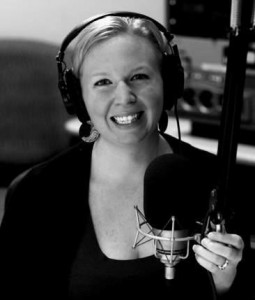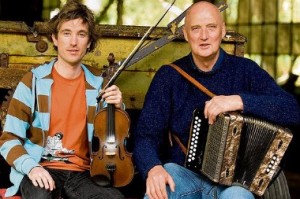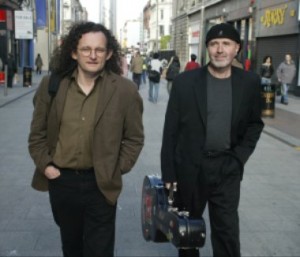When Maureen Malloy was a kid growing up in East Falls and attending Central, WPEN was on all the time, which meant countless airings of “Fridays With Frank” and “Sundays With Sinatra,” along with the music of the big bands, and standards of the 1940s, ‘50s and ‘60s. So you might say she had a head start on what would ultimately become her job and her passion: jazz program director and on-air personality at WRTI, Temple’s hybrid classical-jazz station.
Malloy (family roots: Mayo) started hosting jazz shows at the station in 1999, when she was still a student, and she was hooked from the start. She found that she was already well-versed in the Great American Songbook, so it really wasn’t a stretch at all.
We caught up with Malloy this week, in the depths of a pledge drive. Every time we tuned in, it seemed like she was on the air, so we’re grateful for her time.
Here’s what she had to say about her life, her career on radio, and her love of jazz.
Q. Who were your mentors? I assume the great Bob Perkins is one of them. How did they take to you? What did they teach you?
A. Of course B.P. is my mentor! He always would invite the students at WRTI to sit in during his air shifts. Bob is so easy to learn from, because he was able to meet and host for so many of the jazz greats. He just tells me stories about them, and they are good stories, so they stick. He is also a genuine person. When you meet him, it dispels the misconception that jazz deejays always try to act “cool.” Being knowledgeable is cool.
I also must mention Tony Harris and Andre Gardner from WMGK. I worked there a few years back, and those guys taught me so much about the radio industry. Their knowledge of music is borderline ridiculous.
Q. There are so many different jazz genres. Do you have a favorite, and if so, why?
A. When it comes to jazz, it is so hard for me to pick a favorite anything! Being a programmer, I am always more concerned with what the listeners want to hear. If I listed my favorite piece/artist from every genre, you would run of space on this page. I can tell you that my favorite standard is “It’s Only A Paper Moon.” I’m not sure why … I just always like it. I am also a huge sucker for big bands. It doesn’t matter what they are playing. Whatever it is, I’ll listen.
Q. You’ve done many different things in broadcast, but let’s talk about WRTI. What’s special about ‘RTI to you? What do you love about going into the studio?
A. Every so often I will pull a vintage recording out of the library that I know has not been played in a long while. Halfway through the piece of music, the phone will ring, and it might be a listener who is extremely excited because they haven’t heard that tune in 20-plus years. You must understand, a large percentage of our audience are true jazz-heads, so a call like that means that I am doing my job well.
Now, take that same piece of music, but this time the phone call is a listener telling you about an important moment of their life for which that song was the soundtrack. We are very connected with our listeners at WRTI because there aren’t too many of us around with such a huge passion for this art form.
Q. And as a follow-up … if you had a desert island disk, what’s the one tune that would have to be on it, the one you just couldn’t live without? Or maybe it would be easier for you to answer: which record?
A. The one tune I would need to have on that island disc (other than the one I have already named) is Coltrane’s “Equinox.”
Q. Are you a musician? Do you have a musical background?
A. I played piano as a kid. Like many kids, I decided to quit once I entered the teenage years. I wanted to play basketball with my friends. Then, I topped out a 5 foot 6 inches, so the basketball career went right down the drain. I should’ve stuck with the piano!






